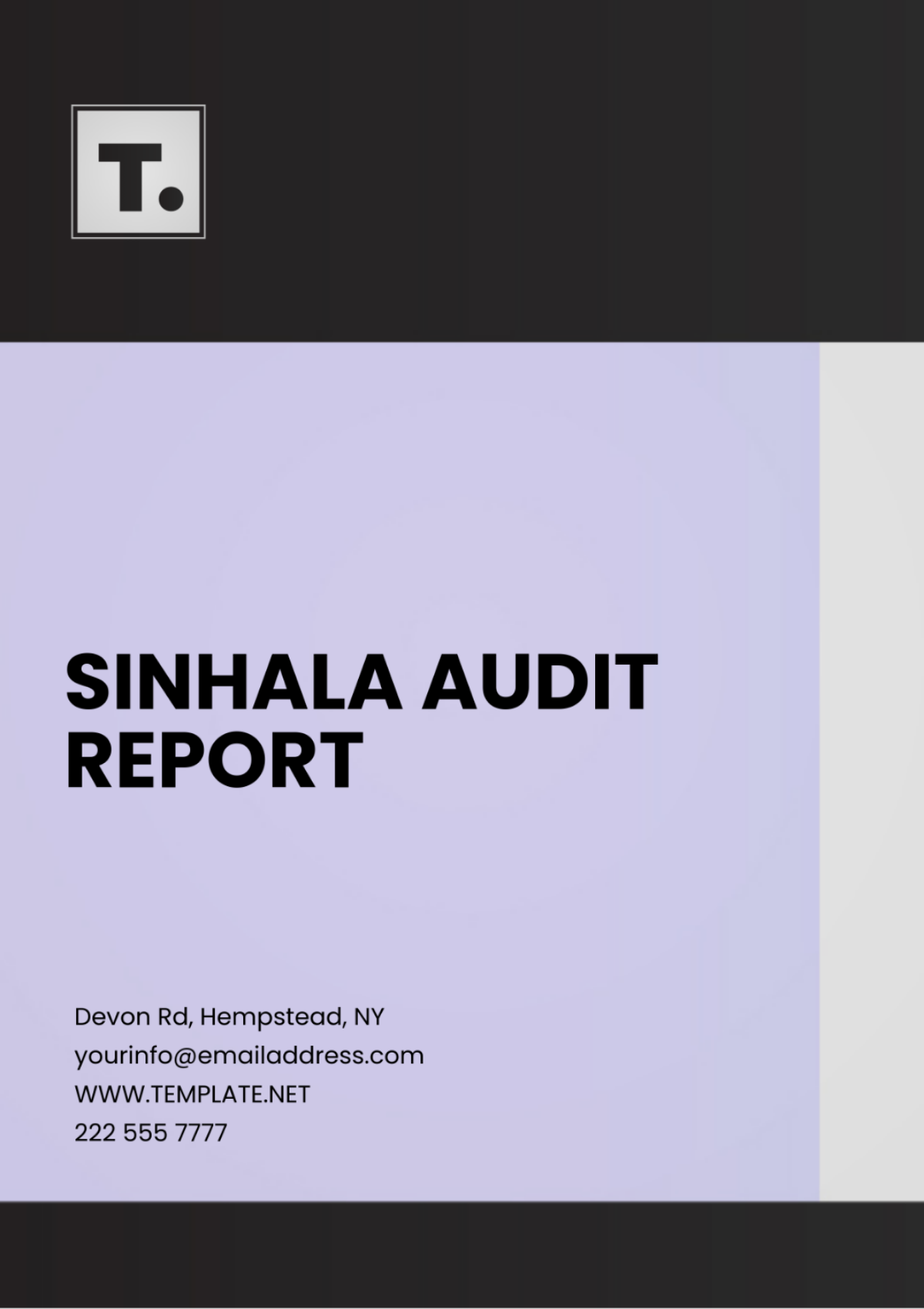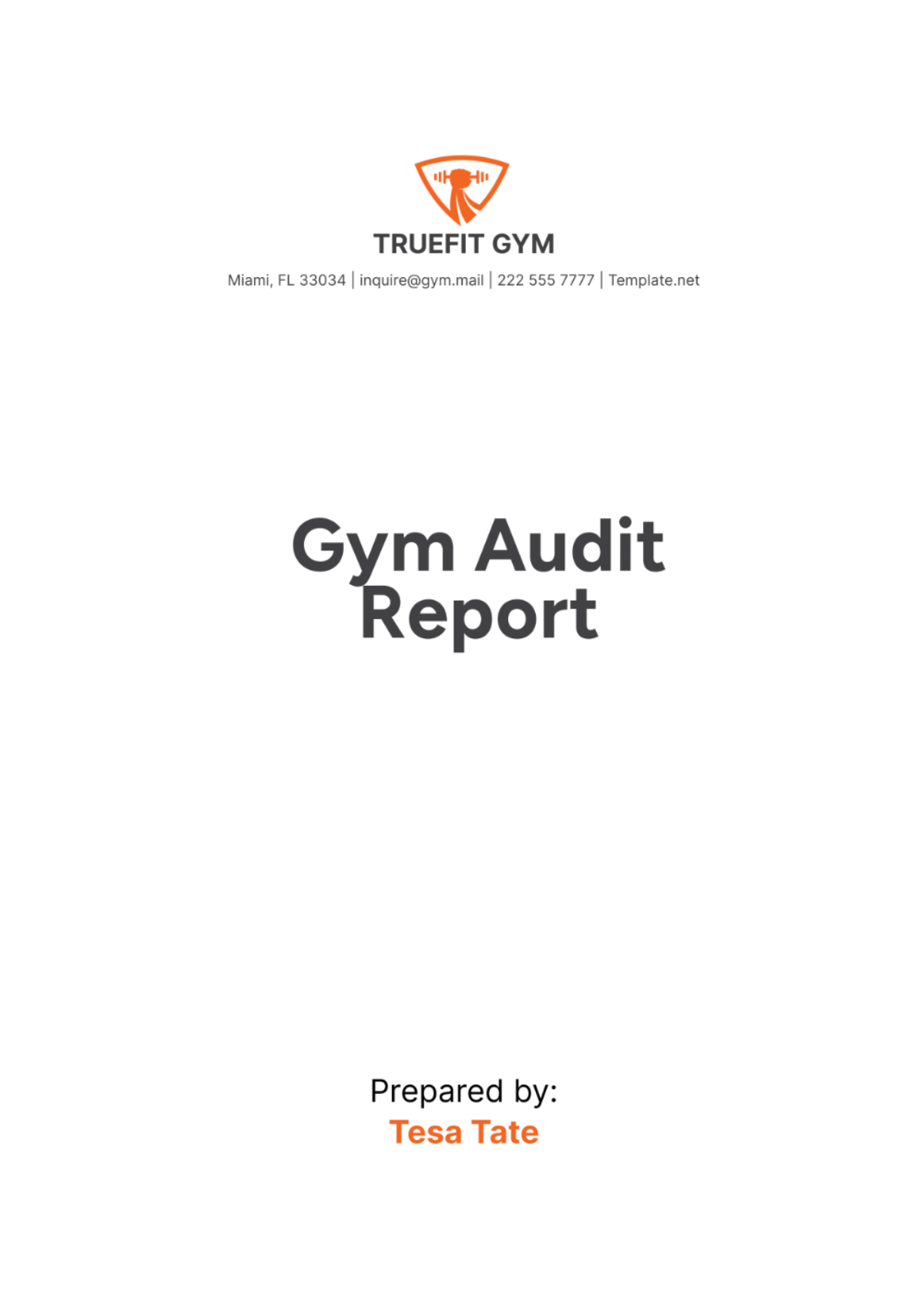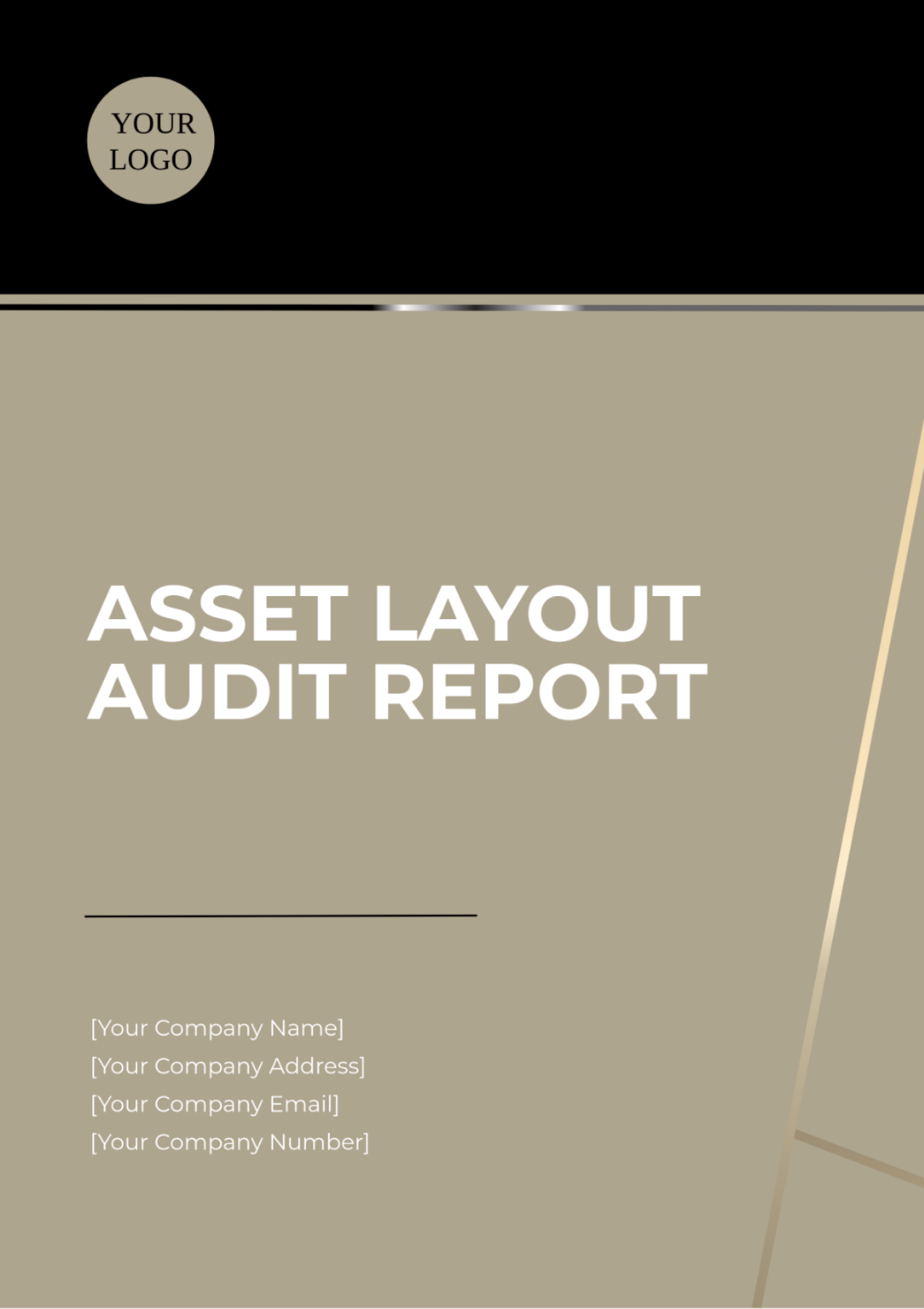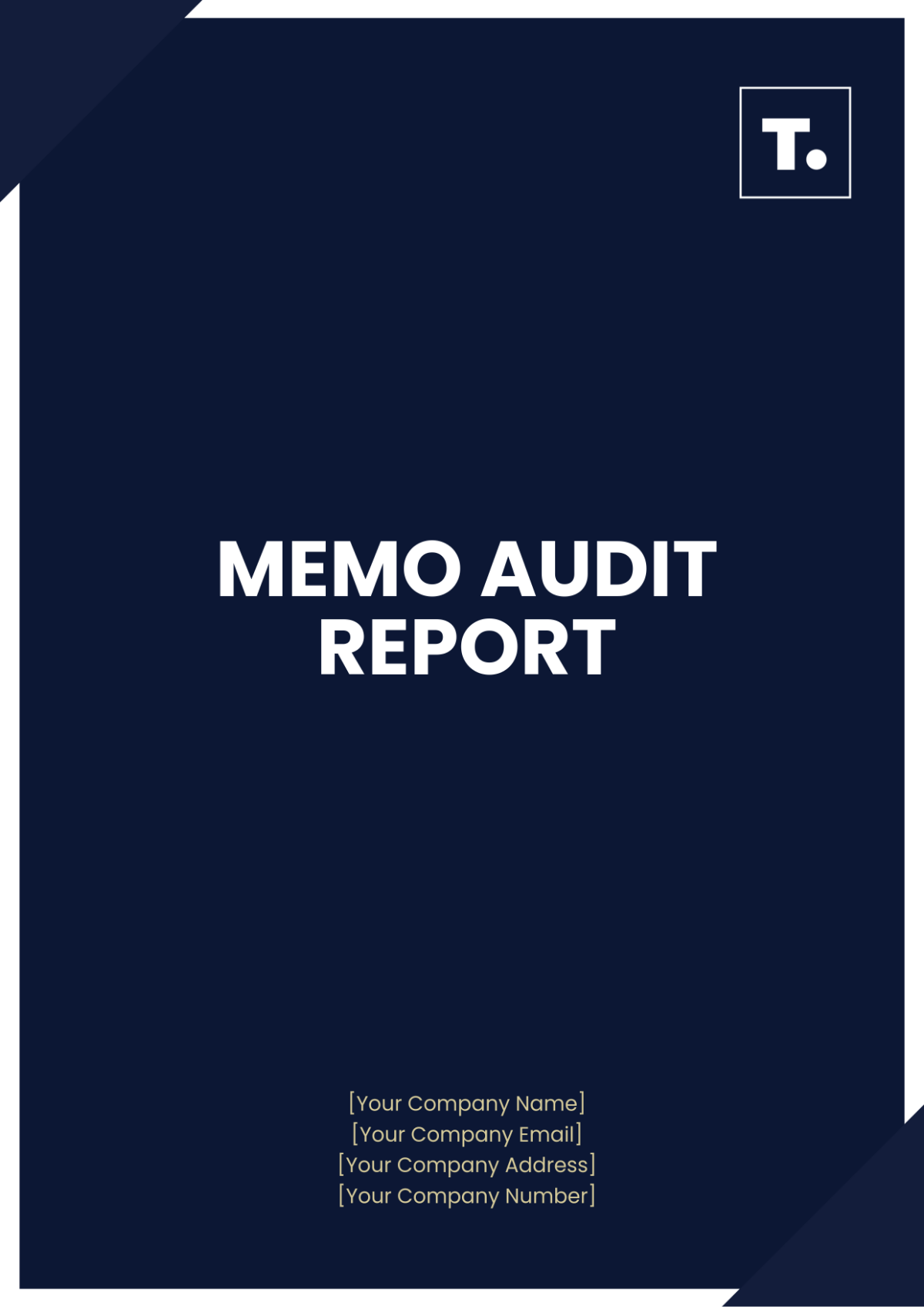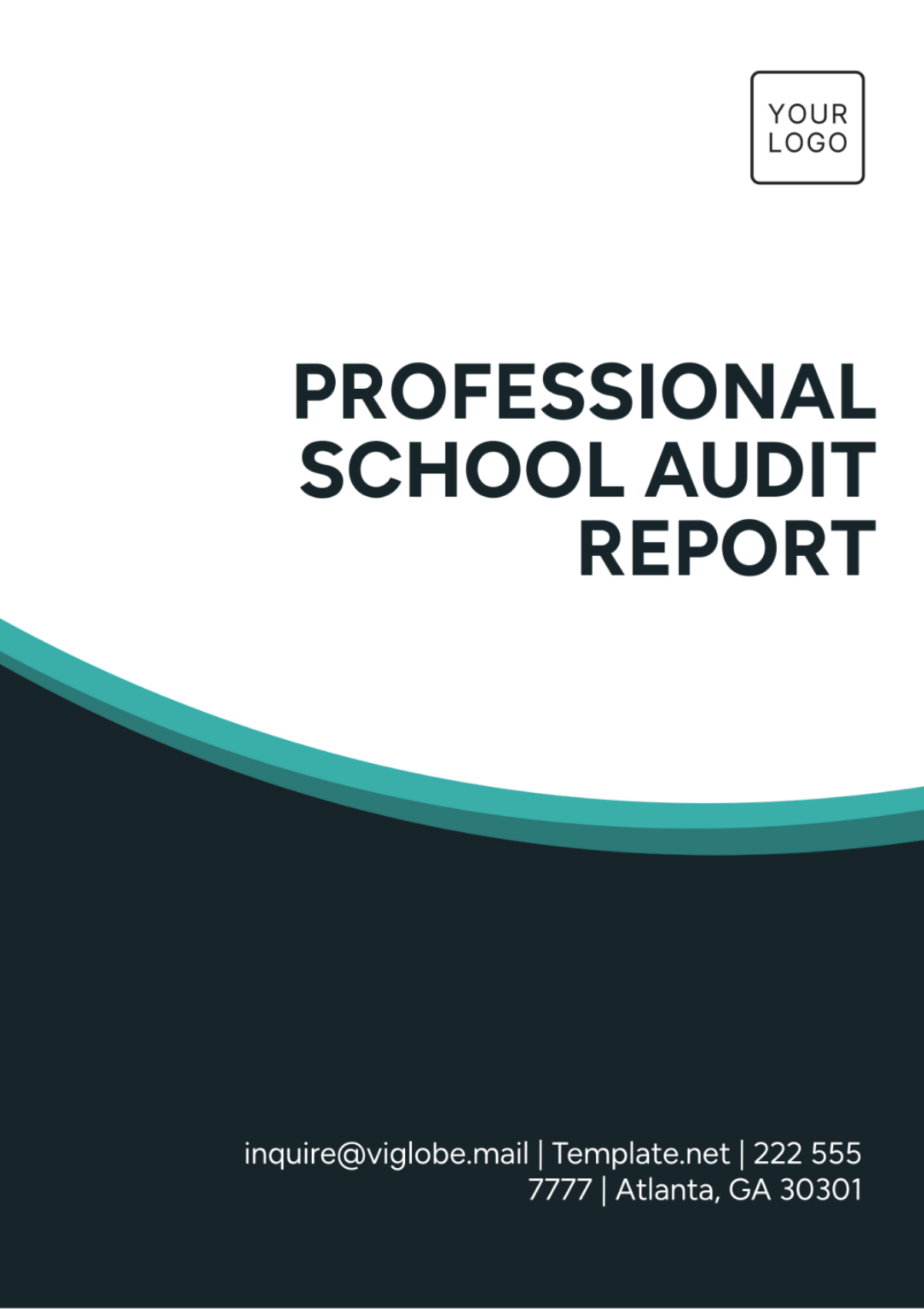Marketing Social Media Audit Report Format
I. Introduction
This Marketing Social Media Audit Report provides a comprehensive audit of [Your Company Name]'s social media performance. The goal is to assess the effectiveness of our current social media strategies, identify areas for improvement, and provide actionable recommendations. The audit covers a range of Key Performance Indicators (KPIs) across multiple social media platforms, including engagement rates, follower growth, content performance, and more.
A. Objectives
Evaluate Current Performance: The primary objective is to evaluate the current performance of [Your Company Name]'s social media channels. This includes analyzing engagement metrics, follower growth, and content reach across different platforms.
Identify Strengths and Weaknesses: The audit aims to identify the strengths and weaknesses of our social media strategy. This will help us understand what is working well and what areas need improvement.
Determine Content Effectiveness: The audit will assess the effectiveness of our content strategy, including post frequency, content types, and messaging. This will help us refine our content to better engage our audience.
Provide Actionable Recommendations: The final objective is to provide actionable recommendations based on the audit findings. These recommendations will guide future social media strategies and help achieve our marketing goals.
B. Scope of the Audit
Platforms Analyzed: The audit covers the major social media platforms where [Your Company Name] is active, including Facebook, Instagram, Twitter, LinkedIn, and YouTube. Each platform will be analyzed individually to provide platform-specific insights.
Timeframe: The audit examines data from the past six months. This timeframe provides a sufficient period to identify trends and patterns in our social media performance.
Metrics Analyzed: Key metrics analyzed in this audit include engagement rate, follower growth, content reach, Click-Through Rate (CTR), and audience demographics. These metrics are essential for understanding the effectiveness of our social media efforts.
Data Sources: Data for this audit is sourced from social media analytics tools, platform-specific insights, and third-party software. This ensures that the data is accurate, up-to-date, and comprehensive.
C. Methodology
Data Collection: Data was collected using a combination of social media analytics tools and manual tracking. Each platform's native analytics tools were used to gather data on engagement, reach, and audience demographics.
Qualitative Analysis: In addition to quantitative data, qualitative analysis was conducted to assess the sentiment of user comments, the quality of interactions, and the overall brand perception on social media.
Content Analysis: The audit included a thorough analysis of our content strategy, focusing on post frequency, content types, and messaging. This helped identify which types of content resonate most with our audience.
Reporting: The findings of the audit were compiled into this report, with each section providing detailed insights, explanations, and recommendations for improvement.
II. Social Media Performance Overview
The following chart and table provide the overview of [Your Company Name]'s social media performance across different platforms. The data includes key metrics such as follower growth and engagement rate:
Platform | Follower Growth | Engagement Rate |
|---|---|---|
12% | 4.5% | |
15% | 6.8% | |
8% | 3.2% | |
10% | 5.1% | |
YouTube | 9% | 4% |
A. Follower Growth
Facebook: The follower growth on Facebook has been steady, with a 12% increase over the past six months. This growth indicates a consistent interest in our brand, driven by targeted content and paid promotions.
Instagram: Instagram shows the highest follower growth at 15%. This suggests that our visual content and use of trending hashtags are resonating well with our audience.
Twitter: Twitter's follower growth is the lowest at 8%. While the growth is positive, it highlights the need for a more robust engagement strategy on this platform to attract and retain followers.
LinkedIn: LinkedIn has experienced a 10% growth in followers, which is encouraging for a professional network. This growth reflects our focus on sharing industry-related content and company updates.
YouTube: YouTube's 9% follower growth is indicative of our video content's appeal. However, there is potential to increase this growth by optimizing our video content strategy and increasing posting frequency.
B. Engagement Rate
Facebook: The engagement rate on Facebook stands at 4.5%, which is moderate. This rate suggests that while our content is reaching a broad audience, it may not be compelling enough to generate high levels of interaction.
Instagram: With a 6.8% engagement rate, Instagram is our most engaging platform. This high engagement can be attributed to the visual nature of the content and the use of interactive features like stories and polls.
Twitter: The engagement rate on Twitter is 3.2%, indicating lower interaction levels. This may be due to the fast-paced nature of the platform, where content quickly becomes outdated. A more dynamic posting strategy could improve engagement.
LinkedIn: LinkedIn has a 5.1% engagement rate, which is strong for a professional network. This rate reflects the relevance of our content to our audience's professional interests.
III. Content Analysis
The following chart and table table summarize the performance of different content types across our social media platforms. The analysis includes metrics such as average likes, shares, and comments per post.
Content Type | Average Likes | Average Shares | Average Comments |
|---|---|---|---|
Blog Posts | 250 | 75 | 30 |
Infographics | 320 | 100 | 40 |
Videos | 400 | 120 | 50 |
Product Promotions | 220 | 60 | 25 |
A. Blog Posts
Average Performance: Blog posts generate an average of 250 likes, 75 shares, and 30 comments per post. While these numbers are respectable, there is potential for greater reach and engagement by optimizing the content for social sharing.
Content Strategy: The current content strategy for blog posts focuses on industry insights and company updates. While informative, these posts could benefit from more attention-grabbing headlines and calls to action to increase interaction.
Optimization Opportunities: To enhance the performance of blog posts, we should consider incorporating more visual elements, such as images or infographics, to make the content more engaging. Additionally, promoting blog posts through targeted ads could increase their visibility and engagement.
Audience Insights: The engagement with blog posts suggests that our audience values informative content. However, to maximize the impact, we need to ensure that the content is easily shareable and visually appealing.
B. Infographics
High Engagement: Infographics perform well, with an average of 320 likes, 100 shares, and 40 comments per post. This indicates that our audience responds positively to visual content that conveys information clearly and concisely.
Content Relevance: The high engagement with infographics suggests that the topics we choose are relevant and valuable to our audience. We should continue to focus on creating infographics that address key industry trends and insights.
Content Design: The design of our infographics is a critical factor in their success. By ensuring that our infographics are visually appealing and easy to understand, we can maintain high levels of engagement.
Distribution Strategy: To further boost the performance of infographics, we could explore partnerships with industry influencers or websites to share our content. This would increase our reach and potentially attract new followers.
C. Videos
Top Performer: Videos are the top-performing content type, with an average of 400 likes, 120 shares, and 50 comments per post. This suggests that our audience is highly engaged with video content.
Content Variety: The videos we share range from product demonstrations to behind-the-scenes footage. This variety keeps our audience interested and engaged. We should continue to experiment with different types of video content to maintain high engagement.
Video Quality: High production quality is a key factor in the success of our videos. By investing in professional video production, we can ensure that our videos continue to perform well.
Engagement Tactics: To further enhance video performance, we could incorporate interactive elements such as polls or Q&A sessions within the videos. This would encourage viewers to engage more actively with the content.
D. Product Promotions
Moderate Engagement: Product promotion posts receive moderate engagement, with an average of 220 likes, 60 shares, and 25 comments per post. While these numbers are satisfactory, there is potential to increase engagement through more creative and interactive approaches.
Content Appeal: The current approach to product promotions focuses on highlighting features and benefits. To boost engagement, we could consider incorporating customer testimonials or success stories, which may resonate more with our audience.
Interactive Elements: Adding interactive elements, such as polls or contests, to product promotion posts could increase engagement. Encouraging user participation can make these posts more appealing and shareable.
Promotional Timing: The timing of product promotions is also a critical factor. By analyzing when our audience is most active, we can schedule promotions to maximize visibility and engagement.
IV. Audience Demographics
The following table provides insights into the demographics of our social media audience. The data includes information on age and gender:
Demographic | Percentage | Dominant Age Group | Gender Split |
|---|---|---|---|
30% | 25-34 | 45:55 | |
35% | 18-24 | 40:60 | |
15% | 25-34 | 50:50 | |
10% | 35-44 | 60:40 | |
YouTube | 10% | 18-24 | 55:45 |
A. Age Distribution
Dominant Age Groups: The dominant age group on Facebook is 25-34, indicating that our content appeals to young professionals. Instagram and YouTube have a younger audience, with 18-24 being the most common age group.
Platform-Specific Insights: LinkedIn's audience is older, with the 35-44 age group being the most dominant. This aligns with LinkedIn's focus on professional networking. Twitter also attracts a young professional audience, with 25-34 being the largest age group.
Targeting Strategies: Understanding the age distribution of our audience allows us to tailor our content and advertising strategies to better engage these age groups. For example, content on LinkedIn could focus more on career-related topics, while Instagram could feature more visually appealing content aimed at younger audiences.
Content Customization: By customizing content based on age group preferences, we can increase engagement and retention. For instance, creating more video content for YouTube, which has a younger audience, could drive higher engagement.
Engagement Tactics: Different age groups engage with content differently. Younger audiences may prefer interactive content, such as polls or quizzes, while older audiences may engage more with informative or professional content.
B. Gender Split
Female-Dominated Platforms: Instagram and Facebook have a slightly higher female audience, with a 60:40 and 55:45 gender split, respectively. This suggests that our content on these platforms should be tailored to appeal to female users.
Male-Dominated Platforms: LinkedIn has a predominantly male audience, with a 60:40 split. This aligns with LinkedIn's focus on professional networking, which tends to attract more male users in certain industries.
Balanced Platform: Twitter has an even gender split, indicating that our content on this platform appeals equally to both male and female users. This balance suggests that our content strategy is effectively engaging a diverse audience.
Content Strategies: To engage both genders effectively, we should consider creating content that appeals to each demographic. For example, on Instagram, we could create posts that resonate more with female users, while on LinkedIn, we could focus on content that appeals to male professionals.
V. Paid Social Media Campaigns
The following table provides an overview of the performance of [Your Company Name]'s paid social media campaigns over the past six months. The data includes key metrics such as cost per click (CPC), click-through rate (CTR), and return on ad spend (ROAS).
Campaign | CPC | CTR | ROAS |
|---|---|---|---|
Summer Promo Blast | $0.75 | 1.5% | 150% |
Holiday Flash Sale | $0.90 | 1.2% | 120% |
New Year Special | $0.85 | 1.3% | 130% |
Spring Savings Event | $0.70 | 1.6% | 160% |
A. Cost Per Click (CPC)
Summer Promo Blast: This campaign has a CPC of $0.75, which is competitive and suggests that our ads are efficiently driving traffic at a low cost.
Holiday Flash Sale: With a CPC of $0.90, this campaign is slightly more expensive, indicating that the ads may be targeting a more competitive audience or using higher-value keywords.
New Year Special: This campaign has a CPC of $0.85, which is still within a reasonable range but indicates that there may be opportunities to optimize costs further by refining targeting strategies.
Spring Savings Event: With the lowest CPC at $0.70, this campaign is the most cost-effective, suggesting that the targeting and ad creatives used are highly efficient.
B. Click-Through Rate (CTR)
Summer Promo Blast: This campaign has a CTR of 1.5%, indicating that the ads are successfully capturing the interest of the audience and driving clicks.
Holiday Flash Sale: With a CTR of 1.2%, this campaign has the lowest click-through rate, suggesting that the ads may not be as compelling or relevant to the audience.
New Year Special: This campaign has a CTR of 1.3%, which is average but indicates that there is room for improvement in ad creativity and targeting.
Spring Savings Event: This campaign has the highest CTR at 1.6%, indicating that the ads are highly effective in engaging the audience and encouraging them to click through.
C. Return on Ad Spend (ROAS)
Summer Promo Blast: This campaign has a ROAS of 150%, indicating that for every dollar spent, the campaign generates $1.50 in revenue. This is a strong return, suggesting that the campaign is highly profitable.
Holiday Flash Sale: With a ROAS of 120%, this campaign is less profitable but still delivers a positive return, suggesting that while the campaign is effective, there may be opportunities to increase profitability through optimization.
New Year Special: This campaign has a ROAS of 130%, which is moderately profitable, indicating that it is performing well but there may be room for further optimization.
Spring Savings Event: With the highest ROAS at 160%, this campaign is the most profitable, suggesting that the combination of a low CPC and high CTR has resulted in a highly efficient campaign.
VI. Content Performance Analysis
The following table provides a breakdown of the top-performing content on [Your Company Name]'s social media channels over the past three months. The data includes key metrics such as likes, shares, comments, and views.
Content Type | Likes | Shares | Comments | Views |
|---|---|---|---|---|
Blog Posts | 500 | 150 | 75 | 10,000 |
Infographics | 700 | 200 | 100 | 15,000 |
Videos | 1,000 | 300 | 150 | 20,000 |
Product Promotions | 600 | 180 | 90 | 12,000 |
A. Blog Posts
Engagement: Blog posts receive a moderate level of engagement, with an average of 500 likes, 150 shares, and 75 comments per post. This indicates that our audience finds value in the content, but there may be opportunities to increase engagement through more interactive elements or by addressing trending topics.
Content Strategy: To boost the performance of blog posts, we could consider incorporating more visuals, such as images or infographics, and optimizing headlines for search engines and social sharing.
Distribution Channels: Blog posts are primarily shared on Facebook and LinkedIn, where they resonate well with our audience. To increase reach, we could explore sharing blog content on other platforms like Twitter or Instagram.
B. Infographics
High Engagement: Infographics are among the top-performing content types, with an average of 700 likes, 200 shares, and 100 comments per post. This high engagement suggests that our audience finds infographics to be visually appealing and informative.
Content Creation: To maintain and increase the performance of infographics, we should continue to focus on creating high-quality visuals that are easy to understand and share. Topics that address common pain points or provide valuable insights are likely to perform well.
Shareability: Infographics are highly shareable, particularly on platforms like Pinterest and Instagram, where visual content thrives. By optimizing infographics for these platforms, we can increase their reach and engagement.
C. Videos
Top Performer: Videos are the top-performing content type, with an average of 1,000 likes, 300 shares, and 150 comments per video. This indicates that our audience is highly engaged with video content, finding it both entertaining and informative.
Content Variety: To maintain high engagement levels, we should continue to produce a variety of video content, including tutorials, product demos, and customer testimonials. This variety keeps the audience engaged and encourages repeat views.
Video Quality: High production quality is essential for maintaining the performance of video content. By investing in professional video production, we can ensure that our videos continue to perform well.
D. Product Promotions
Moderate Engagement: Product promotion posts receive moderate engagement, with an average of 600 likes, 180 shares, and 90 comments per post. While these numbers are satisfactory, there is potential to increase engagement through more creative and interactive approaches.
Content Appeal: The current approach to product promotions focuses on highlighting features and benefits. To boost engagement, we could consider incorporating customer testimonials or success stories, which may resonate more with our audience.
Interactive Elements: Adding interactive elements, such as polls or contests, to product promotion posts could increase engagement. Encouraging user participation can make these posts more appealing and shareable.
Promotional Timing: The timing of product promotions is also a critical factor. By analyzing when our audience is most active, we can schedule promotions to maximize visibility and engagement.
VII. Recommendations
Based on the insights gathered from this audit, the following recommendations are proposed to improve [Your Company Name]'s social media performance:
A. Content Strategy
Diversify Content: Continue to produce a variety of content types, including videos, infographics, and blog posts, to keep the audience engaged. Focus on high-quality content that provides value to the audience.
Increase Frequency: Consider increasing the frequency of content posting, particularly for high-performing content types such as videos and infographics. This will help maintain visibility and engagement.
Interactive Content: Incorporate more interactive elements, such as polls, quizzes, and contests, into the content strategy. This will encourage higher levels of audience participation and engagement.
Tailored Content: Tailor content to the specific demographics of each social media platform. For example, create more career-focused content for LinkedIn and more visually appealing content for Instagram.
B. Audience Engagement
Engage with Audience: Actively engage with the audience through comments, direct messages, and live sessions. This will help build a stronger connection with followers and encourage more interaction.
Leverage User-Generated Content: Encourage the audience to create and share content related to [Your Company Name]. This can be done through contests, hashtags, or challenges, and helps increase engagement and reach.
Monitor Feedback: Regularly monitor feedback from the audience to understand their preferences and interests. Use this information to refine content and engagement strategies.
C. Paid Campaigns
Optimize Targeting: Continuously refine targeting strategies for paid campaigns to ensure that ads are reaching the most relevant audience. This will help improve click-through rates and return on ad spend.
Test Ad Creatives: Regularly test different ad creatives to identify which ones resonate best with the audience. This will help optimize the effectiveness of paid campaigns.
Allocate Budget Wisely: Allocate more budget to high-performing campaigns and content types. This will help maximize the return on investment from paid social media efforts.
IX. Conclusion
This Marketing Social Media Audit Report has provided a comprehensive overview of [Your Company Name]'s social media performance across various platforms. Through detailed analysis of key metrics, content performance, and audience demographics, several areas of strength and opportunities for improvement have been identified.
To enhance [Your Company Name]'s social media strategy, it is recommended to focus on diversifying content, increasing audience engagement, and optimizing paid campaigns. By implementing these recommendations, [Your Company Name] can achieve greater success in its social media marketing efforts, ultimately driving increased brand awareness, engagement, and conversions.
Overall, [Your Company Name] is well-positioned to continue growing its social media presence by building on existing strengths and addressing areas for improvement. By staying agile and responsive to audience needs, [Your Company Name] can maintain a competitive edge in the ever-evolving social media landscape.







